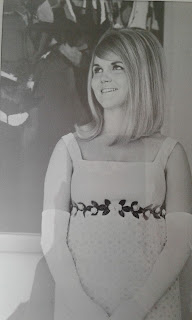From an early age, Linda Monsen
Rowley (’70) dreamed of being an elementary school teacher. SUU helped her
reach her dream and more, as she became an educator, mentor, and teacher of
teachers.
Born and raised in Salt Lake
City, Utah, Linda graduated from South High School in 1965. After some coaxing from
an uncle, who was the superintendent of schools in Beaver County, she decided
to visit what was then the College of Southern Utah (known now as SUU). Linda
loved what she found on her visit: a small campus, friendly people, superior
teachers, and an excellent education department. She chose to enroll at SUU, and
says that decision proved to be one of the best of her life.
While a student, Linda
immersed herself in academics and all that college life had to offer. She loved
her education classes, worked in the education department, joined Chi Sigma
Upsilon Sorority, and even participated in the homecoming tradition of mud
football with members of the 5th Dimension, who happened to be on
campus for the homecoming concert. Linda was a catalyst for cooperation among
the fraternities and sororities at the time, and served on a college council where
she promoted Greek unity. Her years at SUU prepared her well to become a
teacher, and along the way she gained stronger tolerance of others and
leadership skills that positively shaped her future career pursuits. She also
gained lifelong friends that still return to campus each year for homecoming.
Linda began her 34-year teaching
career by running the Step Ahead Preschool with Vicki Wright Gomez, a high
school and SUU friend. She taught parenting classes for the Salt Lake School
District, was employed by the Jordan School District as an elementary school
teacher, administrator, and facilitator of the Jordan School District/BYU
Partnership. Linda also worked for BYU as a clinical faculty member and liaison
where she taught courses and supervised all phases of pre-service education for
the BYU/Public School Partnership. She trained and mentored many successful
educators.
“My students have excelled to
become remarkable teachers, authors, administrators, and to hold district and
university positions,” she says. “It was my goal to be able to turn the most
important position of educating children over to capable well trained
professional teachers.”
While at SUU, Linda met and
married Cedar City native Dennis Rowley. The couple will celebrate 48 years of
marriage this year, and are the parents of three children (two attended SUU), and
have eight grandchildren (one attended SUU and another is a freshman this
year), and two great-grandchildren.
Family is Linda’s most
important possession, and she enjoys activities with them such as “comfort”
camping at their cabin at Bear Lake, golf, reading, traveling and sleeping in. She
and Dennis have visited every state in the U.S., and have also visited Canada,
Mexico, Europe, and Africa. She is actively serves in her church and remains
involved with professional educational organizations, even though she has
retired.
Linda credits SUU for helping
her define purpose in her professional life, discovering she could accomplish
anything she set out to do, and that tasks have better end results when
completed by a team.









